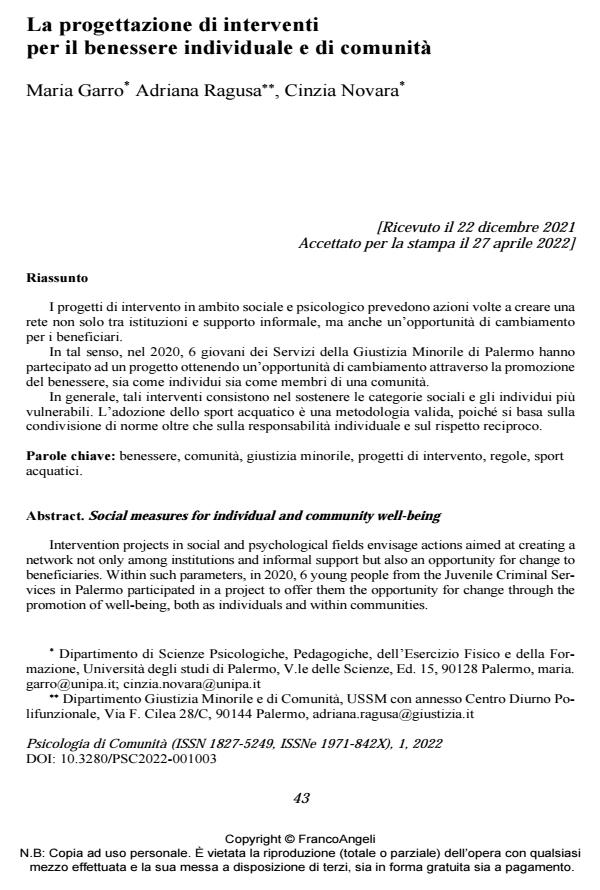La progettazione di interventi per il benessere individuale e di comunità
Titolo Rivista PSICOLOGIA DI COMUNITA’
Autori/Curatori Maria Garro Adriana Ragusa, Cinzia Novara
Anno di pubblicazione 2022 Fascicolo 2022/1
Lingua Italiano Numero pagine 17 P. 43-59 Dimensione file 255 KB
DOI 10.3280/PSC2022-001003
Il DOI è il codice a barre della proprietà intellettuale: per saperne di più
clicca qui
Qui sotto puoi vedere in anteprima la prima pagina di questo articolo.
Se questo articolo ti interessa, lo puoi acquistare (e scaricare in formato pdf) seguendo le facili indicazioni per acquistare il download credit. Acquista Download Credits per scaricare questo Articolo in formato PDF

FrancoAngeli è membro della Publishers International Linking Association, Inc (PILA)associazione indipendente e non profit per facilitare (attraverso i servizi tecnologici implementati da CrossRef.org) l’accesso degli studiosi ai contenuti digitali nelle pubblicazioni professionali e scientifiche
I progetti di intervento in ambito sociale e psicologico prevedono azioni volte a creare una rete non solo tra istituzioni e supporto informale, ma anche un’opportunità di cambiamento per i beneficiari. In tal senso, nel 2020, 6 giovani dei Servizi della Giustizia Minorile di Palermo hanno par-tecipato ad un progetto ottenendo un’opportunità di cambiamento attraverso la promozione del benessere, sia come individui sia come membri di una comunità. In generale, tali interventi consistono nel sostenere le categorie sociali e gli individui più vulnerabili. L’adozione dello sport acquatico è una metodologia valida, poiché si basa sulla condivisione di norme oltre che sulla responsabilità individuale e sul rispetto reciproco.
Parole chiave:benessere, comunità, giustizia minorile, progetti di intervento, regole, sport acquatici.
- First- and Second-Generation Migrants: Attitudes Towards Homosexuality: The Role of Generation, Gender, and Religion Gaetano Di Napoli, Maria Garro, Marco Andrea Piombo, Cinzia Novara, in Behavioral Sciences /2025 pp.1190
DOI: 10.3390/bs15091190
Maria Garro Adriana Ragusa, Cinzia Novara, La progettazione di interventi per il benessere individuale e di comunità in "PSICOLOGIA DI COMUNITA’" 1/2022, pp 43-59, DOI: 10.3280/PSC2022-001003